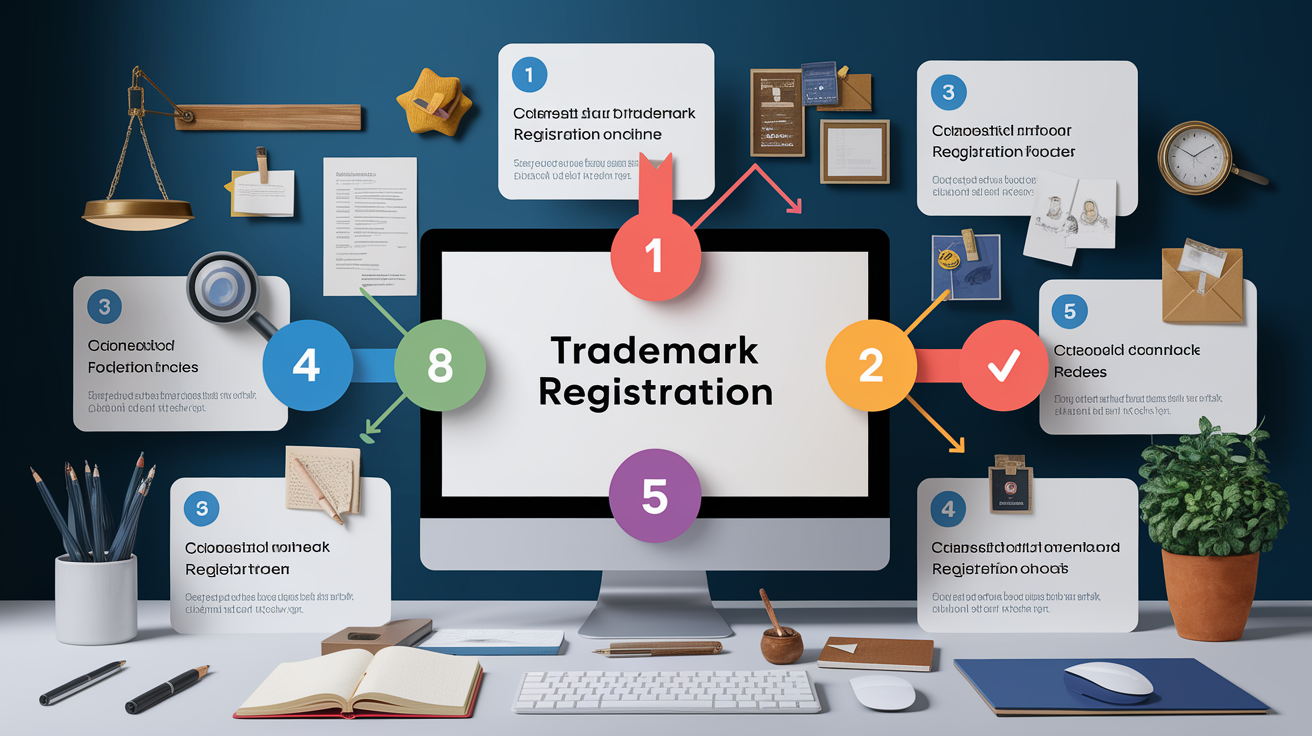Understanding trademark-registration-online-step-by-step
Starting the journey to protect your brand can feel like standing at the bottom of a mountain without any climbing gear. You know the peak—exclusive rights to your mark—is up there, but the path might seem steep and full of twists. That’s where understanding the online trademark registration process gives you the “gear” you need.
Online trademark registration through the USPTO or other intellectual property offices is a structured, multi-stage process designed to ensure your trademark is unique, identifiable, and legally protected. It grants you exclusive nationwide rights to use the trademark for your goods or services and helps guard against infringement.

At its core, the process boils down into five key parts:
- Preparation — gathering clear representations and descriptions of your trademark.
- Search — confirming your chosen mark isn’t already taken.
- Filing — submitting your application through official systems like TEAS.
- Examination and publication — awaiting review and managing potential opposition.
- Maintenance — keeping your protection active over time.
Let’s walk through each step together, breaking down the legal jargon into everyday language.
Preparing Your Materials for trademark-registration-online-step-by-step
Preparation sets the tone for your entire journey. Think of it as packing your backpack before a long trek—you want the right tools in reach.
A trademark application requires several essential elements:
- Representation of the trademark — this could be a word mark, logo, or design.
- Description of goods/services — a precise account of what you offer under the mark.
- Owner’s information — your contact details or your company’s legal identity.
- Trademark classes — categories under the international Nice Classification system to define your goods/services.
Systems like the USPTO’s TEAS offer two filing options. TEAS Plus has lower fees but stricter requirements; TEAS Standard costs more but allows more flexibility. Choosing the right one depends on how complete and precise your documentation is.

To avoid rejection, ensure your descriptions meet the legal standards and that your trademark image or wording is clear. This stage is where professional guidance from a trademark attorney can prove invaluable, though many entrepreneurs successfully complete DIY filings by using online trademark registration platforms and guides such as Rocket Lawyer.
Conducting a Trademark Search in trademark-registration-online-step-by-step
Imagine spending months building your brand, only to discover that someone else already owns the rights to your trademark. That’s where the trademark search—your map—comes into play.
The first critical step is checking whether the desired mark is already registered or in use. Ignoring this is like setting out on a hike without checking the weather forecast—you might run into avoidable trouble.
You can do a preliminary search yourself using the USPTO’s Trademark Electronic Search System (TESS) or the EUIPO database. These tools allow you to look for identical or similar marks. However, spotting “hidden” similarities—marks that sound alike or appear visually similar—can be tricky for non-professionals. Comprehensive clearance services, such as those outlined at Bonamark, go deeper, assessing the likelihood of successful registration and finding potential conflicts.

If you do your own search:
- Search exact matches first.
- Look for phonetically similar words.
- Check variations such as plural forms, abbreviations, or translated equivalents.
- Review the trademark classes relevant to your goods/services.
The more thorough your search, the fewer surprises you’ll encounter later.
Filing Your Application in trademark-registration-online-step-by-step
This is the moment you take your first official step up the legal mountain—you file your application.
With your materials ready and your search complete, head to a trusted filing portal. In the United States, that’s the USPTO’s TEAS. Here’s what you’ll do:
- Log in or create an account with the USPTO.
- Choose TEAS Plus or TEAS Standard filing option.
- Enter your trademark details (representation, description, owner info).
- Select the correct trademark class(es) under Nice Classification.
- Provide the filing basis (use in commerce or intent to use).
- Pay the relevant filing fees (ranging from $250-$350 per class in the U.S.).
- Submit the application electronically.
According to the LegalZoom guide, clarity and completeness in your application drastically improve your chances of smooth processing. Double-check each field before submission.
Monitoring and Maintaining Your trademark-registration-online-step-by-step
Filing doesn’t mean the journey is over—it’s closer to reaching base camp than the summit.
After submission, your application enters an examination phase where a trademark examiner reviews it for compliance with the Trademark Manual of Examining Procedure (TMEP). You may receive an Office Action, meaning the examiner needs clarification or corrections. Responding promptly is crucial: most deadlines are strict, and missed responses can lead to abandonment.
If approved, your trademark is published in the Trademark Official Gazette for a 30-day opposition period. No opposition—or successful defense against one—will result in a federal trademark certificate being issued, granting you the right to use the ® symbol.
Post-registration maintenance is just as important as getting the trademark in the first place. The USPTO’s maintenance guidelines require you to:
- File a Declaration of Use between years 5 and 6.
- Renew your registration every 10 years with proof of continued use.
- Monitor for market infringements and act quickly to enforce your rights.
Your trademark is like a home—it’s not enough to purchase it; you must care for it, protect it, and ensure it stands strong against the elements of competition.
By following each step carefully—preparing, searching, filing, responding, and maintaining—you climb steadily toward lasting brand protection.







